Amir Mohtashemi is a dealer and leading specialist in Indian and Islamic art. His experience in this field spans over 25 years and today his advice is sought by private collectors and museums worldwide. The Summer Showcase is a celebration of ‘Indian Art’ centred around a large and rare late 16th century mother-of-pearl and tortoiseshell basin. Basins, and their matching ewers, played an important role in the life of early modern European courts, where they were used for the ceremonial ablutions of the hands.
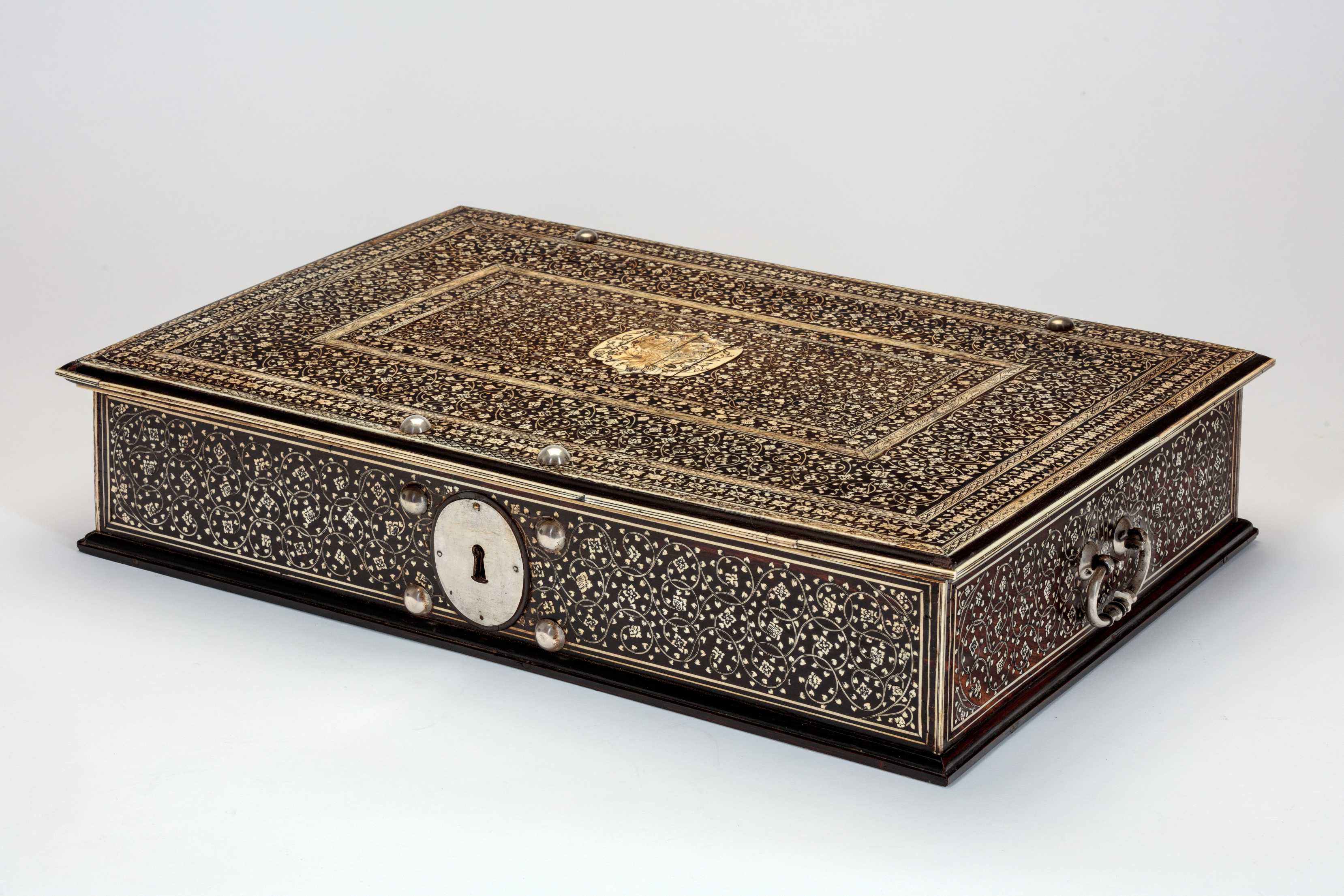
Document Box, Vizagapatnam or Masulipatnam,
circa 1720-40
Of rectangular form, this beautifully detailed ebony box is richly decorated with fine ivory inlay of flowers connected by scrolling vines. Centred on the cover, there is a coat-of-arms which strongly indicates that this box was made specifically for the Western European market. The cover opens upwards to reveal two elaborate silver hinges in trefoil form and a large storage space, ink well, and hidden compartments. It also has silver mounts, handles, hinges and a lock.
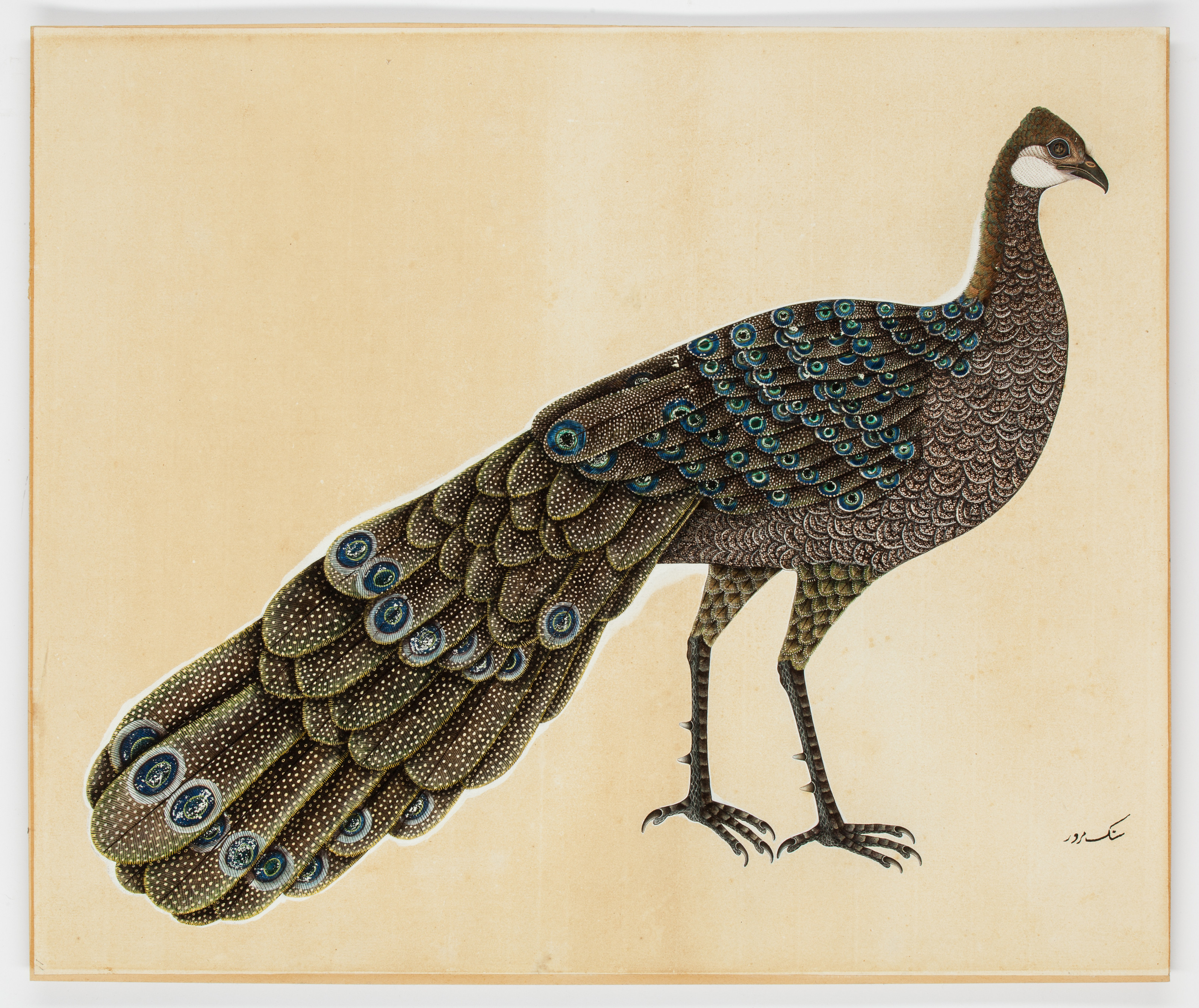
GREY PEACOCK-PHEASANT
Calcutta, India, circa 1800
Watercolours and ink on paper.
44.2cm high, 53.5cm wide (62.5cm x 71.5cm framed)
Private UK Collection; acquired by the owner from a private auction in Lincoln in the 1970s.
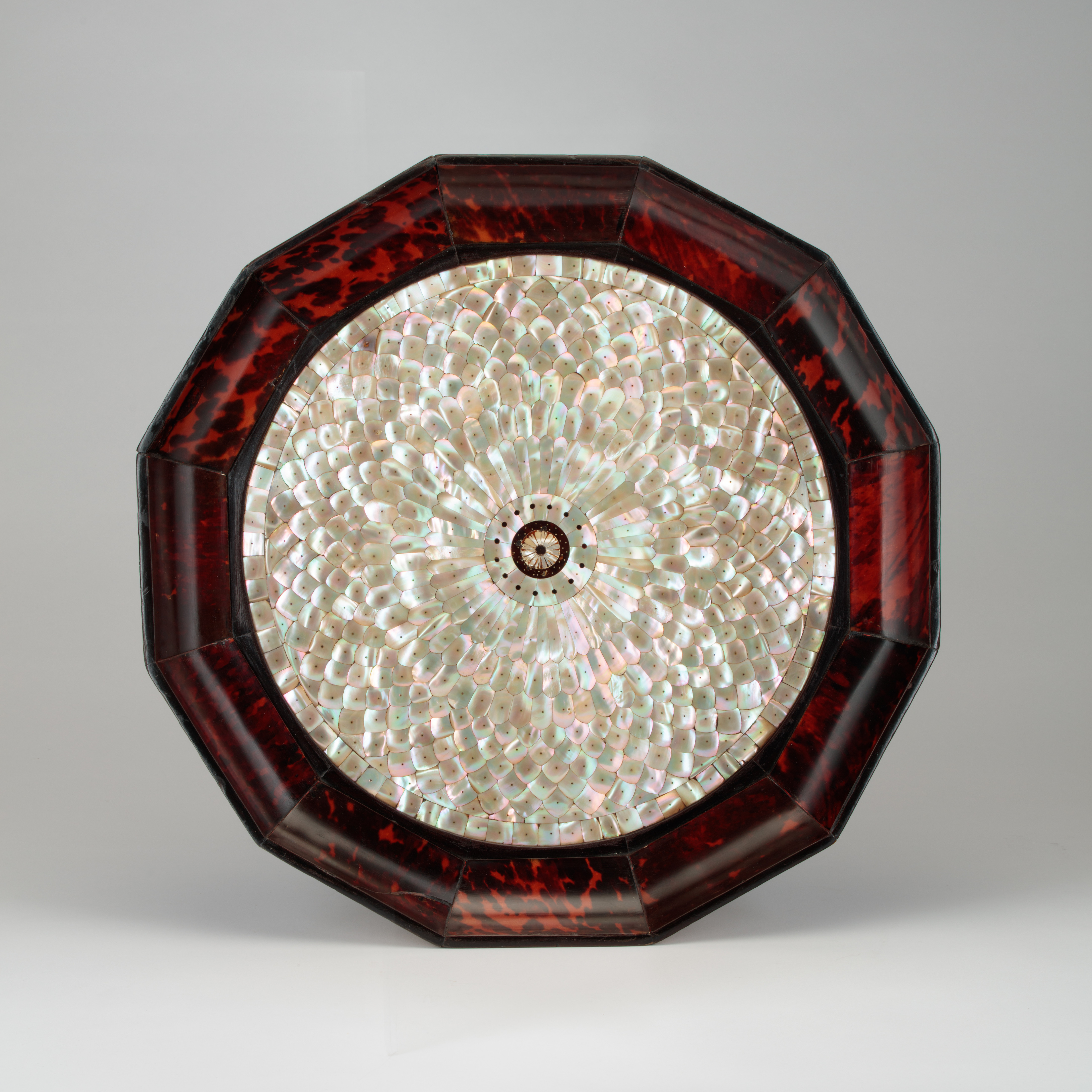
Rare Mother-of-Pearl Hand Washing Basin
This rare mother-of-pearl hand washing basin features tesserae cut from the shell of the green turban sea snail (Turbo marmoratus), a marine gastropod. Basins, and their matching ewers, played an important role in the life of early modern European courts, where they were used for the ceremonial ablution of the hands. Large Indian basins such as the present one, made from wood - most probably teak (Tectona grandis) - and covered in mother-
of-pearl tesserae, were seemingly modelled after ceramic prototypes, namely Chinese porcelain of the Yuan and Ming dynasties (1271-1644), copying in turn metal prototypes from Central Asia which, having been made in precious materials, have survived in far fewer numbers. This transfer process between artistic media is called skeuomorphism, and has been studied in the context of the Gujarati mother-of-pearl production.[1] The Indian origin of this mother-of-pearl work, namely from Khambhat and Surat (present-day state of Gujarat in Western India) has been fully demonstrated during the last three decades, not only by documentary and literary evidence but also through the survival of 16th-century wooden structures covered in mother-of-pearl tesserae. Geometric in character and somewhat Islamic in nature, this type of artistic work is characterised by the use of mother-of-pearl tesserae which are usually employed to form complex designs of fish scales or stylised lotus flowers. Objects such as basins, plates, dishes and saucers, drinking bowls, bowls, cups, bottles, water jugs and tankards were modelled after European prototypes in pewter and silver brought by the first Europeans to arrive on the west coast of India. The mother-of-pearl tesserae are either pinned or glued to each other with brass pins, or to a wooden base or core in the case of large basins, caskets and small chests.[2] While large dishes are usually made according to the first technique, large basins such as the present one feature a wooden base or core onto which the mother-of-pearl tesserae are pinned; in this case together with tortoiseshell for the central roundel. Although large dishes are uncommon, large basins such as the present example are even rarer. A similar shallow basin, with a wooden base and a continuous radiating flower pattern on the main field resembling that of our basin, survives in the Dresden Kunstkammer, known as the Grünes Gewölbe, Accession Number IV 181. With its matching ewer, it is recorded in the inventories of the Electors of Saxony from 1586 onwards.[3] As with a few surviving examples of such basins with wooden bases, the one from the collection of the rulers of Bavaria in Munich, now housed in the Kunst- und Wunderkammer Burg Trausnitz, Landshut, Accession Number R 1265, still retains its original painted and gilded decoration.[4] The underside was originally painted in coloured shellac over a red varnished ground, not unlike the few surviving Indian basins of this origin, production and date, typical Iranian-style decoration, such as Timurid cartouches, fine foliage sprays and animals. The once shallow, rounded sides that formed the cavetto, possibly damaged during the long trip between India and Europe, were removed and replaced by a twelve-sided arched wooden rim covered by tortoiseshell, an addition which may be dated from the mid-17th century and which betrays the taste for precious pieces of furniture veneered in tortoiseshell, namely in the Spanish Netherlands.[5] Literature: Crespo, H. M. Choices, Lisboa, AR-PAB, 2016. Crespo, H. M. (ed.). At the Prince’s Table. Dining at the Lisbon Court (1500-1700): silver, mother-of-pearl and porcelain, Lisboa, AR-PAB, 2018. Fabri, R. Meubles d' apparat des Pays-Bas méridionaux XVIe-XVIIIe siècle (cat), Bruxelles, Générale de Banque, 1989. Sangl, S. "Indische Perlmutt-Raritäten und ihre europäischen Adaptationen", Jarbuch des Kunsthistorischen Museums Wien, 3, 2001, pp. 262-287.
Syndram, D., J. Kappel, and U. Weinhold. Das Historische Grüne Gewölbe zu Dresden. Die barocke Schatzkammer, Dresden - München - Berlin, Staatliche Kunstsammlungen Dresden - Deutscher Kunstverlag, 2007. [1] Crespo, 2018, p.53 and pp. 132-141, cat. 3 [2] Crespo, 2016, pp. 86-121, cats. 11-12 [3] Syndram, Kappel, and Weinhold, p. 35 [4] Sangl, p. 267 [5] Fabri
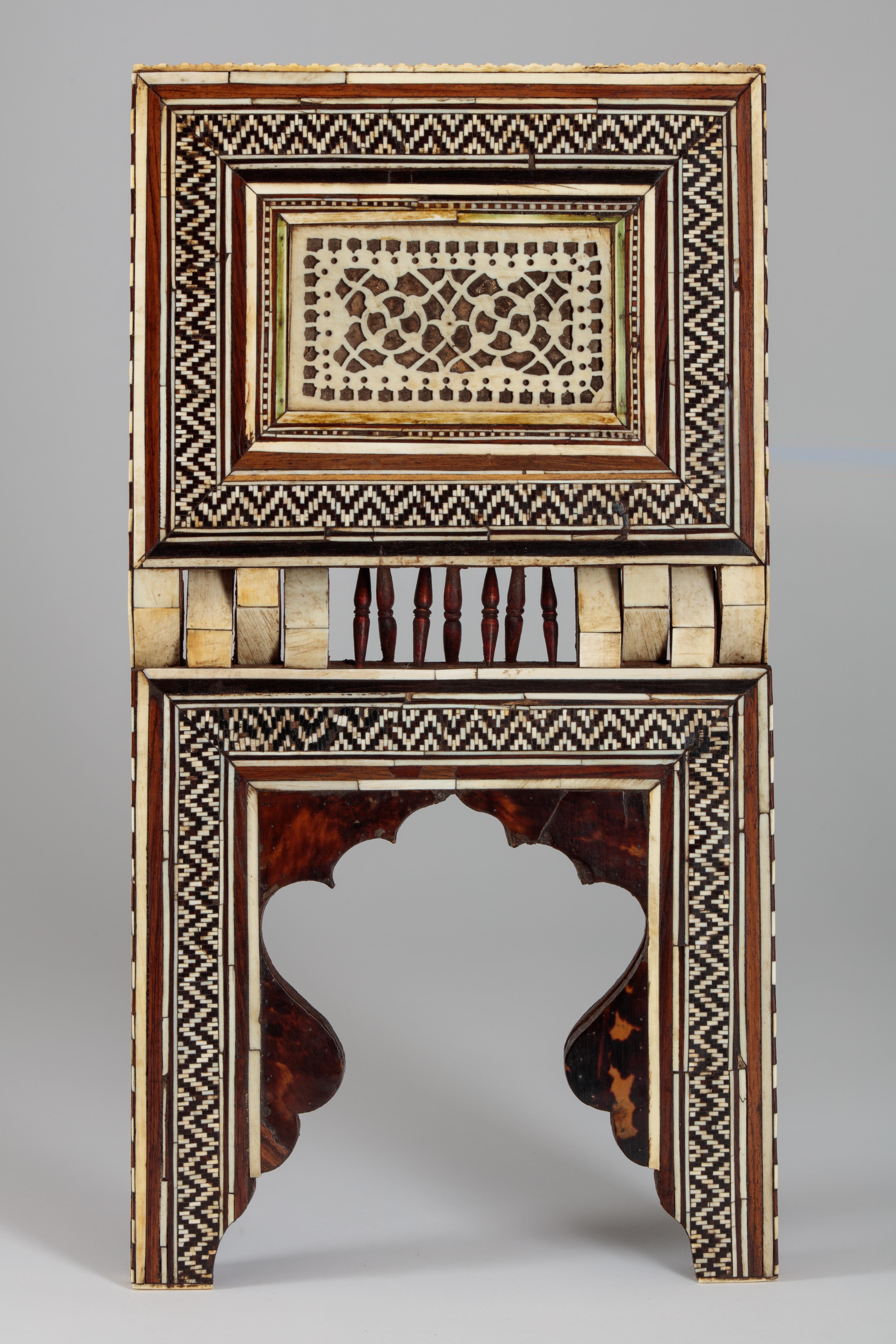
FOLDING QURAN STAND
India, 17th – 18th century
42.2 cm high, 22.2 cm wide (closed)
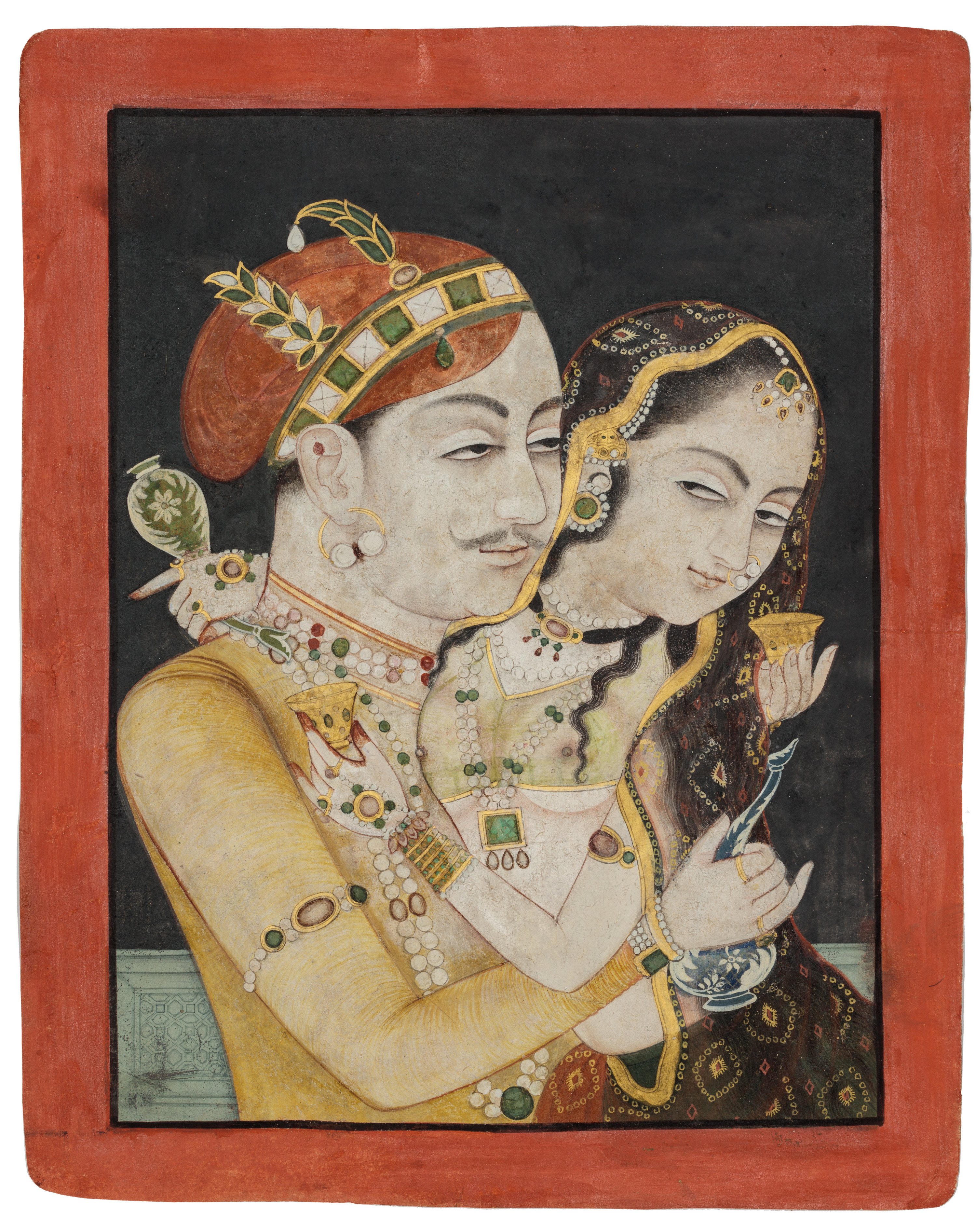
RAJA AND COURTESAN
Bikaner, Rajasthan, India, c. 1680-85
33 cm high, 26.5 cm wide Ink, opaque watercolour on paper Provenance: Private European collection by descent since the 1940
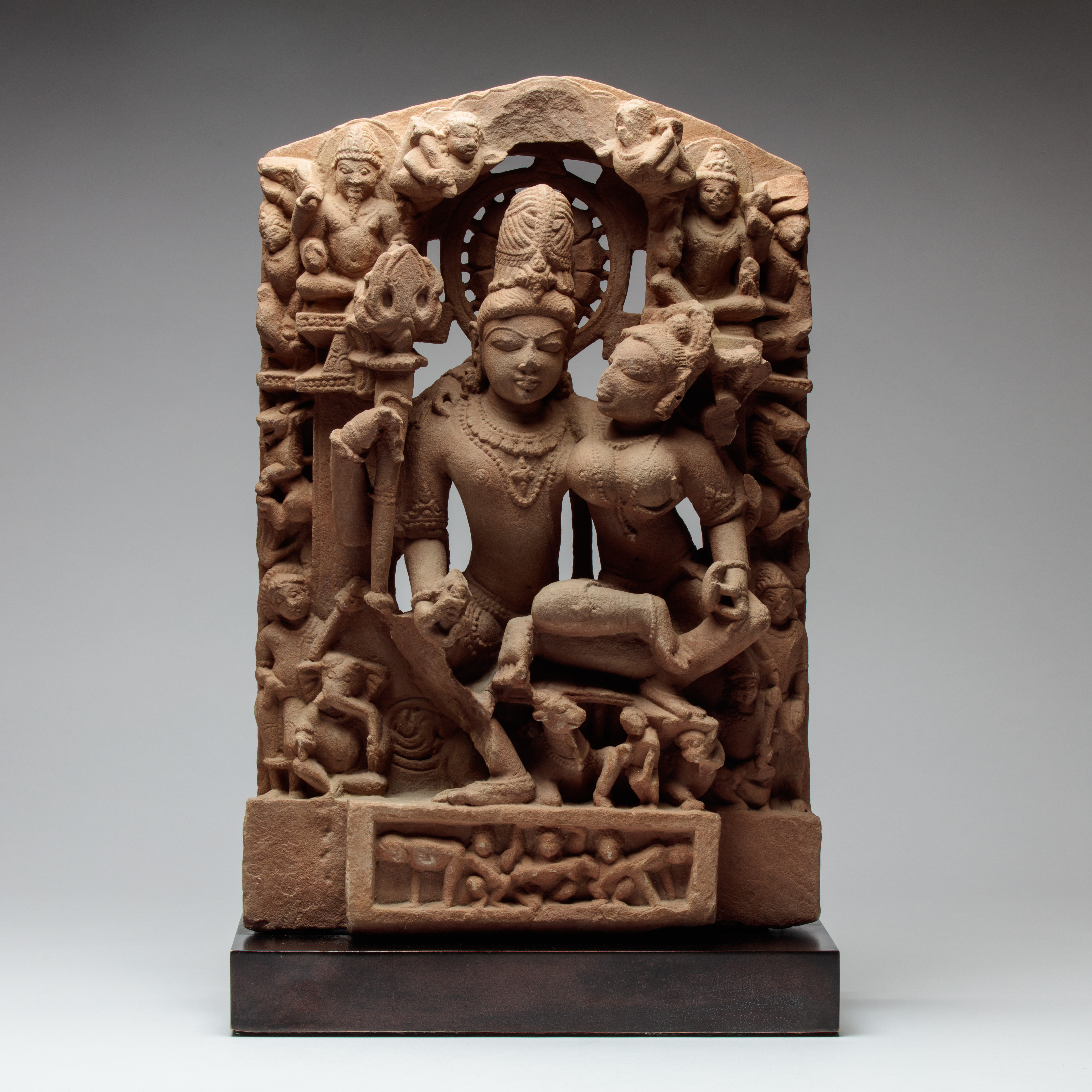
Shiva and Parvati (Uma Maheshvara)
Northern India, 10th-11th century
51 cm high
Provenance: Private European Collection
